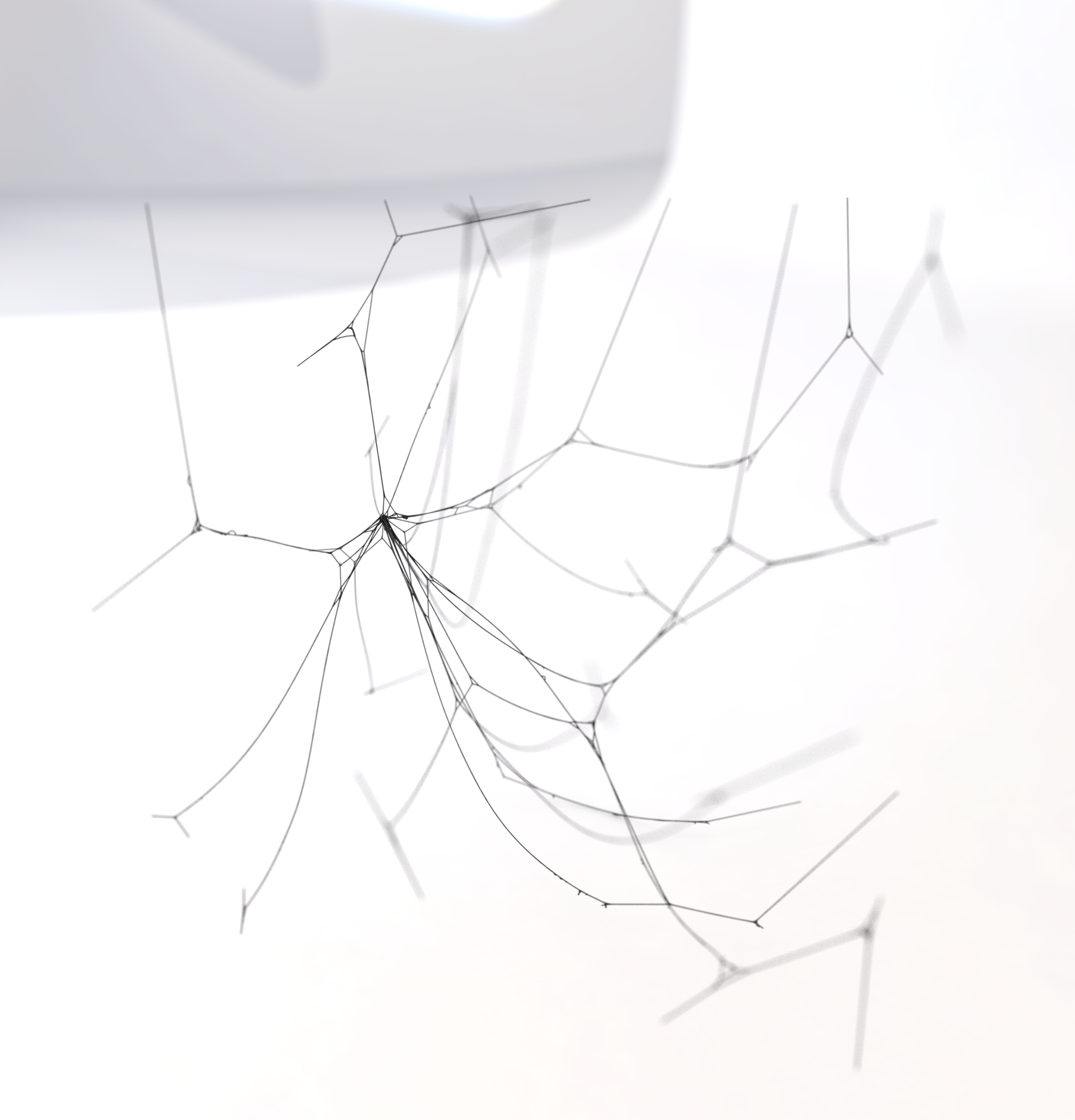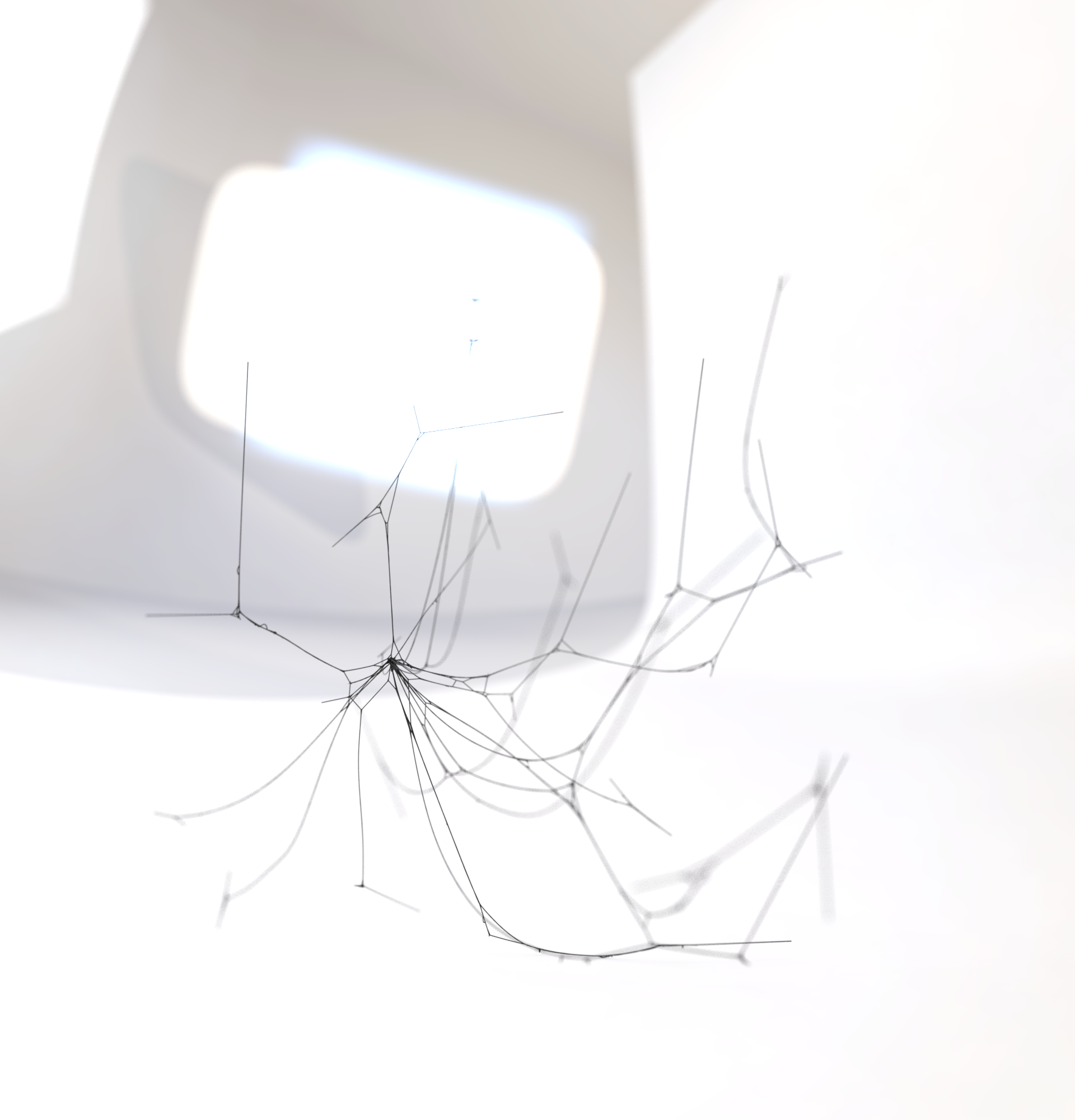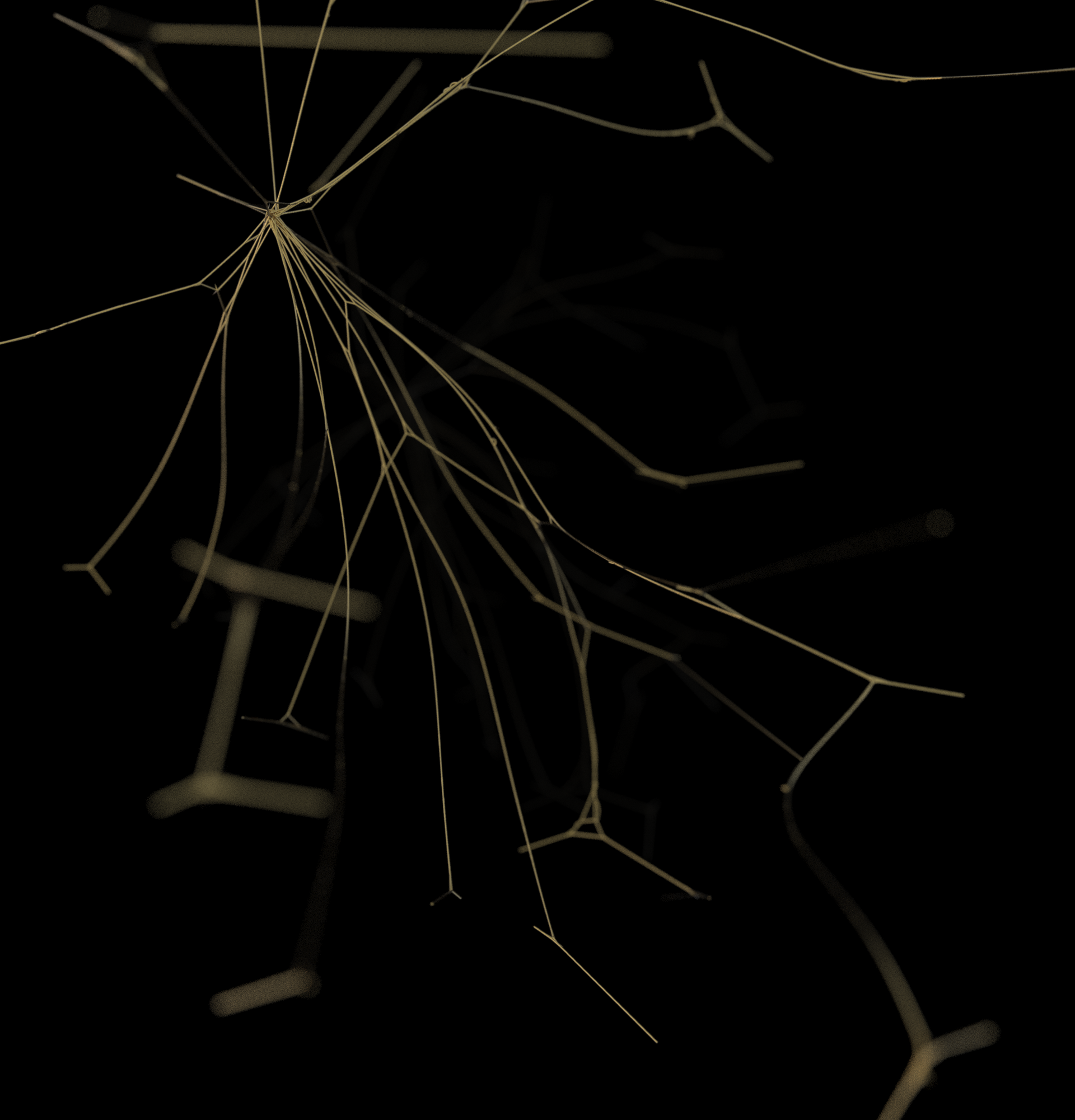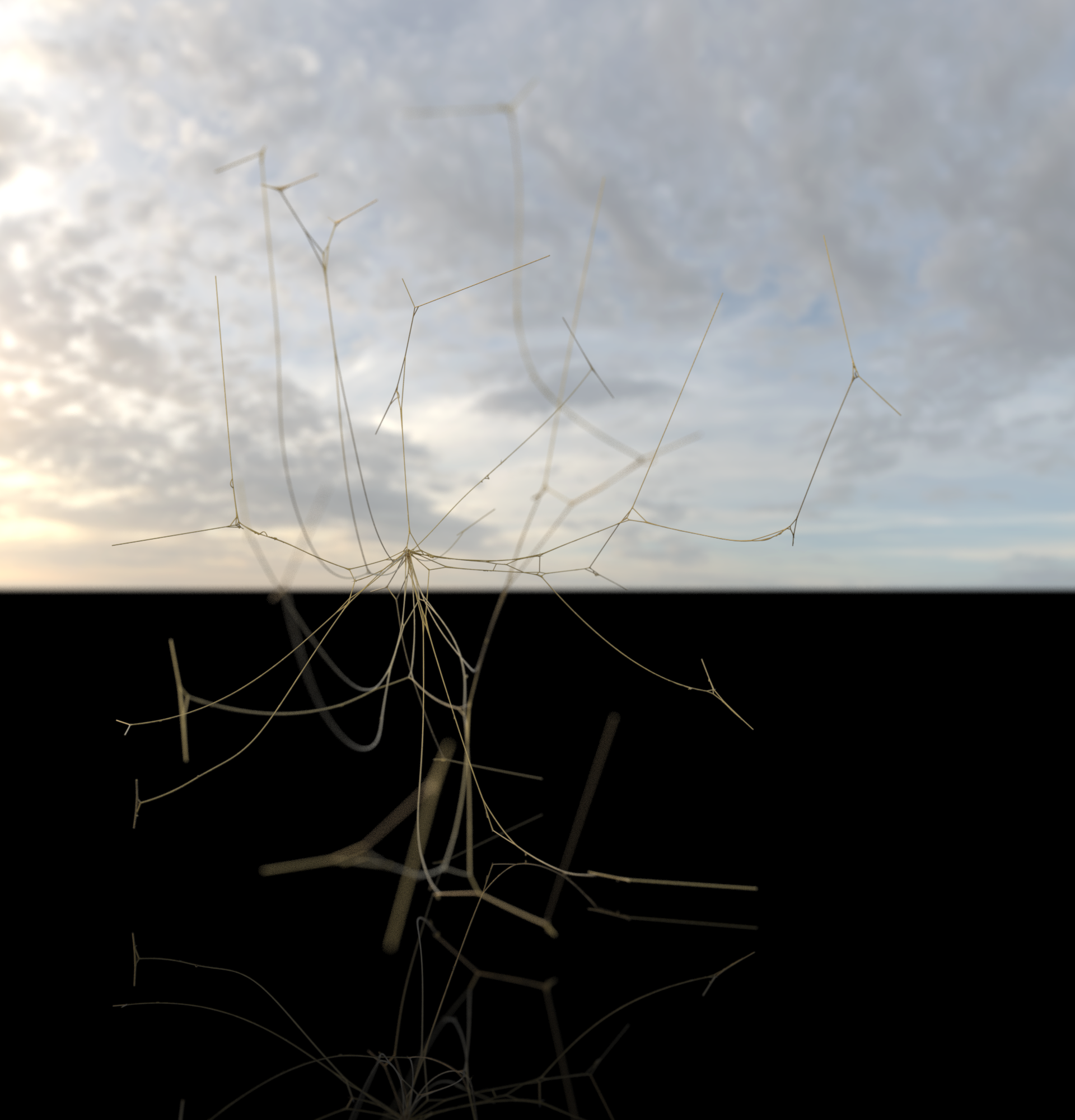Dr@wn2TheW3b
From spider webs and cosmic web. For an astrophysicist, perhaps the most amazing aspect of spider webs is how much they visually resemble computer simulations of the cosmic web — the filamentary structure of the Dark Matter in the universe. For Dr@wn2TheW3b Artist Frederik De Wilde turned himself into a data arachnologist (ref. StarshipSPIDER interstellar spaceship project with Dr. Armstrong), 3d modeled and 3d printed these very intricate and delicate structures.
Most of the matter in the universe is dark. Ordinary (baryonic) matter — the stuff that galaxies, stars, planets, and we (humans) are made of — constitutes only about 4.6 percent of the cosmic energy budget. Dark Matter, which is most likely composed of some subatomic particles that interact very weakly with ordinary matter, at present amounts to about 23 percent (the rest of the cosmic energy is in the form of the even more mysterious Dark Energy). Dark matter provides the scaffolding on which the large-scale structure of the universe is constructed. Ordinary matter is gravitationally attracted to the densest parts of the cosmic web, and there galaxies and clusters of galaxies are formed, leaving large, relatively empty voids. To examine the filamentary intergalactic gas, astronomers use the light from distant quasars. Observing with the Hubble Space Telescope, they utilize the quasar light just like shining a flashlight through fog. Hubble observations have also helped to map the 3D distribution of dark matter through the effect of gravitational lensing — the deflection of light of distant objects by the gravitational field of Dark Matter along the line of sight. The similarity between spider webs and the cosmos doesn’t end there. Fascinatingly, some spider webs even resemble graphical representations of the warping effects of astrophysical black holes on their surrounding space.






